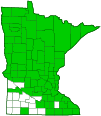wood frog
(Lithobates sylvaticus)
Conservation • Description • Habitat • Biology • Distribution • Taxonomy
|
|
||||||||||||||
Description |
Wood frog is an easily recognized, medium-sized, terrestrial frog. It is 1½″ to The back (dorsal surface) is smooth to moderately rough. Prominent folds on each side of the back (dorsolateral) extend from the head to near the vent. The folds are light on top, dark on the sides. There are often additional short folds on the back between the dorsolateral folds. The color varies. It is usually tan or brown, sometimes gray, reddish-brown, or yellowish-green. Females are usually more reddish than males. The back and sides may have dark mottling. The belly (venter) is white, yellowish-white, or greenish-white and often has dark mottling on the throat and breast. There is a prominent dark mark on each side of the chest near the forelegs (pectoral region). A prominent dark face mask extends from the snout to just behind the ear covering (tympanum). The tympanum is smaller than the eye. The upper lip is white. The back legs have horizontal bands that may be dark or faint. The feet are webbed. On the fourth toe two or three joints are free of the webbing. Males have larger “thumbs” and stouter forelegs. |
Size |
1¼″ to |
Voice |
A short croak repeated several times. Often compared to the quacking of a duck. |
Similar Species |
The prominent dark face mask, often referred to as a robber’s mask, on a brown frog is a unique identifying characteristic. No other species is similar in overall appearance. |
Habitat |
Moist wooded areas, ponds in woods and prairies. |
Biology |
Behavior |
Wood frogs are territorial. Territory size is usually about 100 square meters. Summer months are spent in moist woods or wooded swamps, bogs or ravines. In late fall the frogs migrate to nearby upland areas to find a site to overwinter. |
Lifespan |
3 to 4 years |
Life Cycle |
Breeding is explosive. It occurs from late March to late April after the first warm spring rains, often before ice is completely off the pond. Males do not defend territories at this time but frantically swim after and grab other individuals hoping to find a receptive female. After breeding, the female will deposit 300 to 1,000 eggs in a mass (clutch) loosely attached to emergent vegetation usually near the clutches of other females. Communal egg laying is thought to raise the temperature of the of the communal mass promoting faster development and to protect the inner eggs from leeches and other predators. Metamorphosis occurs at 65 to 130 days. The tadpole is Adults overwinter under the shelter of a log, rock, bark, or leaf litter. They are freeze tolerant and can survive multiple freeze-thaw cycles. Glycerine is produced preventing the formation of ice crystals in vital organs. Males typically live 3 years, females 4 years. |
Tadpole Food |
Algae, decaying organic matter, eggs and embryos of some salamanders |
Adult Food |
Spiders, beetles, bugs, moth larvae, slugs, snails, and other insects and small invertebrates. |
Distribution |
||
|
Sources Biodiversity occurrence data published by: Minnesota Biodiversity Atlas (accessed through the Minnesota Biodiversity Atlas Portal, bellatlas.umn.edu, 6/5/2025). |
|
| 6/5/2025 | ||
Occurrence |
||
Common |
||
Taxonomy |
|
Class |
Amphibia (amphibians) |
Subclass |
Lissamphibia (modern amphibians) |
Superorder |
Batrachia (amphibians) |
Order |
Anura (frogs and toads) |
Suborder |
Neobatrachia |
Superfamily |
Ranoidea |
Family |
Ranidae (typical frogs) |
Genus |
Lithobates (American water frogs) |
Genus In 2016, a consortium of Rana researchers from Europe, Asia, and North America showed that transferring the species to Lithobates caused problems of paraphyly in other genera. In that same year, Yuan et al. returned all North American true frogs to the genus Rana, using subgenera for all of the well-defined species groups within Rana. AmphibiaWeb uses the name Rana septentrionalis. A recent article (Dubois, Alain et al., 2021) proposed a new “phylogenetic taxonomy and nomenclature” of extant amphibians (subclass Lissamphibia). In the proposed taxonomy, the subgenus Aquarana is raised to full species rank, and Lithobates septentrionalis becomes Aquarana septentrionalis. Amphibian Species of the World uses the name Aquarana septentrionalis. |
|
Subordinate Taxa |
|
|
|
Synonyms |
|
Boreorana sylvatica Rana cantabridgensis ssp. cantabridgensis Rana cantabridgensis ssp. latiremis Rana cantabrigensis Rana cantabrigensis ssp. evittata Rana maslini Rana pensylvanica Rana sylvatica Rana sylvatica ssp. cantabrigensis Rana sylvatica ssp. cherokiana Rana sylvatica ssp. latiremis Rana sylvatica ssp. sylvatica Rana temporaria ssp. cantabrigensis Rana temporaria ssp. sylvatica |
|
Common Names |
|
wood frog |
|
Glossary
Tympanum
The circular, disk-like membrane that covers the ear opening of some reptiles and amphibians.
Visitor Photos |
||
Share your photo of this amphibian. |
||
This button not working for you? |
||
Kirk Nelson |
||
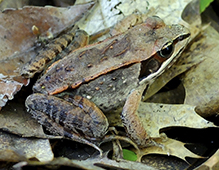 |
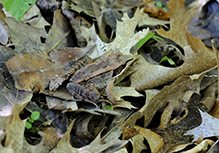 |
|
Dan W. Andree |
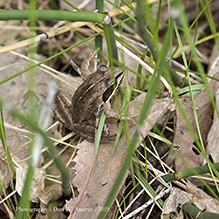 |
Wood Frog... Taken in the woods near a creek on a trail near Twin Valley, Mn. in Norman county on 5-26-19..neat frogs they are... |
Kelsey |
||
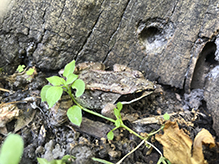 |
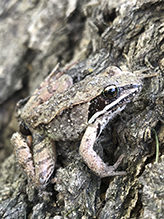 |
|
Jill H. |
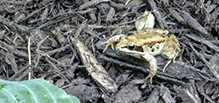 |
This frog has been helping with my landscaping and is happy we are done. |
Laurie Grimm |
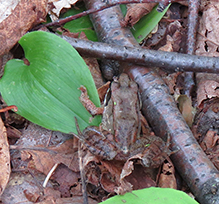 |
Bill Reynolds |
 |
MinnesotaSeasons.com Photos |
||
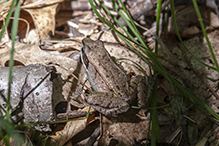 |
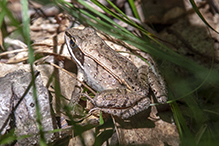 |
|
 |

Slideshows |
Wood Frog |
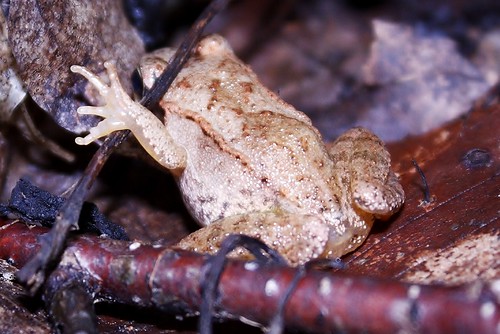
|
About
Rana sylvatica |
Rana sylvatica (Wood Frog) |
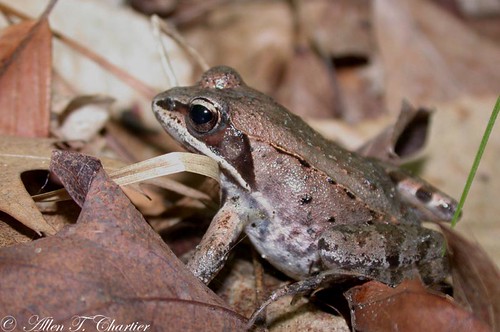
|
Wood Frog |
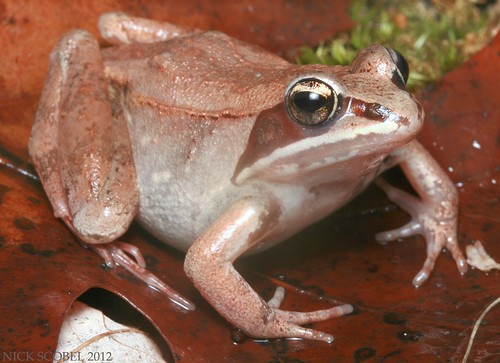
|
Wood Frog (Rana sylvatica) |
About
Published on Apr 30, 2012 No description available. |

Visitor Videos |
||
Share your video of this amphibian. |
||
This button not working for you? |
||
|
Other Videos |
||
Time-lapse video of a wood frog (Rana sylvatica) thawing. |
About
Published on Jun 26, 2013 Time-lapse video of a wood frog (Rana sylvatica) thawing at 4°C following an experimental freezing exposure to --2°C for 24 h. The original Commentary paper is available at http://jeb.biologists.org/content/216/11/1961.abstract |
Mating Wood Frogs, Rana sylvatica |
About
Uploaded on Apr 11, 2009 A collection of short video clips of calling and mating wood frogs (Rana sylvatica). Videos taken the first few days of April, 2009, on the University of Michigan's E.S. George Reserve. |

Visitor Sightings |
||
Report a sighting of this amphibian. |
||
This button not working for you? |
||
| Kirk Nelson 5/25/2019 |
Location: Lebanon Hills Regional Park, near the stream that flows into Schulze Lake |
 |
| Dan W. Andree 5/26/2019 |
Location: near Twin Valley, Mn. in Norman county Taken in the woods near a creek on a trail ... neat frogs they are... |
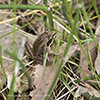 |
| Kelsey 6/8/2019 |
Location: Mound, MN |
 |
| Jill H. 9/11/2018 |
Location: Vadnais Heights, MN This frog has been helping with my landscaping and is happy we are done. |
| Laurie Grimm 6/26/2014 |
Location: Hemlock Ravine SNA |
 |
| Bill Reynolds 9/28/2013 |
Location: Pennington Co Mn |
 |
MinnesotaSeasons.com Sightings |
||

Created: 4/12/2009 Last Updated: © MinnesotaSeasons.com. All rights reserved. |
